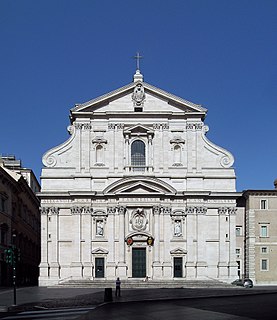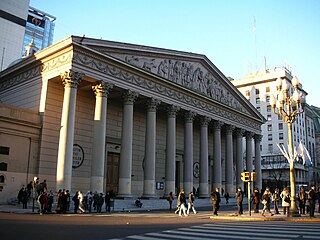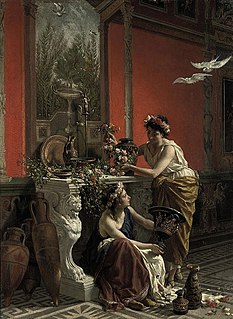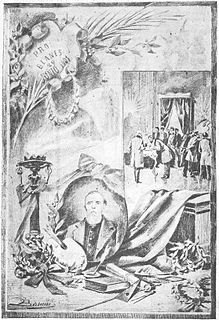Related Research Articles

The Church of the Gesù is the mother church of the Society of Jesus (Jesuits), a Catholic religious order. Officially named Chiesa del Santissimo Nome di Gesù all'Argentina, its facade is "the first truly baroque façade", introducing the baroque style into architecture. The church served as a model for innumerable Jesuit churches all over the world, especially in the Americas. Its paintings in the nave, crossing, and side chapels became models for Jesuit churches throughout Italy and Europe, as well as those of other orders. The Church of the Gesù is located in the Piazza del Gesù in Rome.

The Buenos Aires Metropolitan Cathedral is the main Catholic church in Buenos Aires, Argentina. It is located in the city center, overlooking Plaza de Mayo, on the corner of San Martín and Rivadavia streets, in the San Nicolás neighbourhood. It is the mother church of the Archdiocese of Buenos Aires and the primatial church of Argentina.

Domenico Maria Canuti was an Italian painter of the Baroque period, active mainly in Bologna and Rome. He was a major painter of fresco decorations. His ceiling decorations showed a mix of Bolognese and Roman influences.

Cesare Mariani was an Italian painter and architect of the late-19th century, active in Rome and Ascoli Piceno.

Giuseppe Nicola Nasini was an Italian painter of the Baroque period, active in Rome and Tuscany.

Giovanni Battista Benaschi, or Beinaschi, (1636–1688) was an Italian painter and engraver active in the Mannerist and Baroque style.

Baldassare Verazzi was an Italian painter.

Francesco Manno was an Italian painter and architect of the Neoclassical style.

Fabrizio Chiari (c.1615–1695) was an Italian painter and engraver who spent his entire life in Rome.
Gerolamo Mengozzi Colonna was an Italian painter, mostly of frescoed quadratura.
Gaetano Alemani was an Italian painter, active mainly in Bologna in the architectural and ornamental painting (quadratura) for the decoration of churches and theatres, as well as a scenic designer.

Pietro Pajetta was an Italian painter, mainly of genre subjects.
Matteo Tassi was an Italian painter, best known for his decorative frescoes and restorations.
Carlo Muccioli was an Italian painter, in watercolors and oils, mainly of genre subjects.
Nazzareno Orlandi was an Italian-Argentine painter.
Orazio Orazi was an Italian priest and painter. He is best known for his depictions of sacred subjects for churches in the Province of Macerata.
Luigi De Servi was a French-Italian painter active mainly painting sacred subjects in a late-Mannerist style in Siena, Tuscany, Italy.

Leopoldo Bersani was an Italian painter and sculptor who moved to Uruguay as a young adult.
Fausto Eliseo Coppini was an Italian-Argentine painter.

Ignazio or Ignacio Manzoni was an Italian painter, active for many years in Buenos Aires, Argentina. He painted diverse themes, including history, battle, religious, and landscape paintings, as well as still-lifes and portraits.
References
- ↑ Dizionario biografico degli italiani al Plata; by Barozzi, Baldassini, and company; 1st edition, Buenos Aires (1899); page 256.
- ↑ Barozzi, Baldassini, and company; page 256.
- ↑ Storia degli Italiani nell' Argentina, by Giuseppe Parisi; Enrico Voghera, editor; Rome (1907); page 571.
- ↑ Puente del Inca acquired by Carlo Becci, and given honorable mention at the Buenos Aires Atheneum in 1886.
- ↑ Barozzi, Baldassini, and company; page 256.